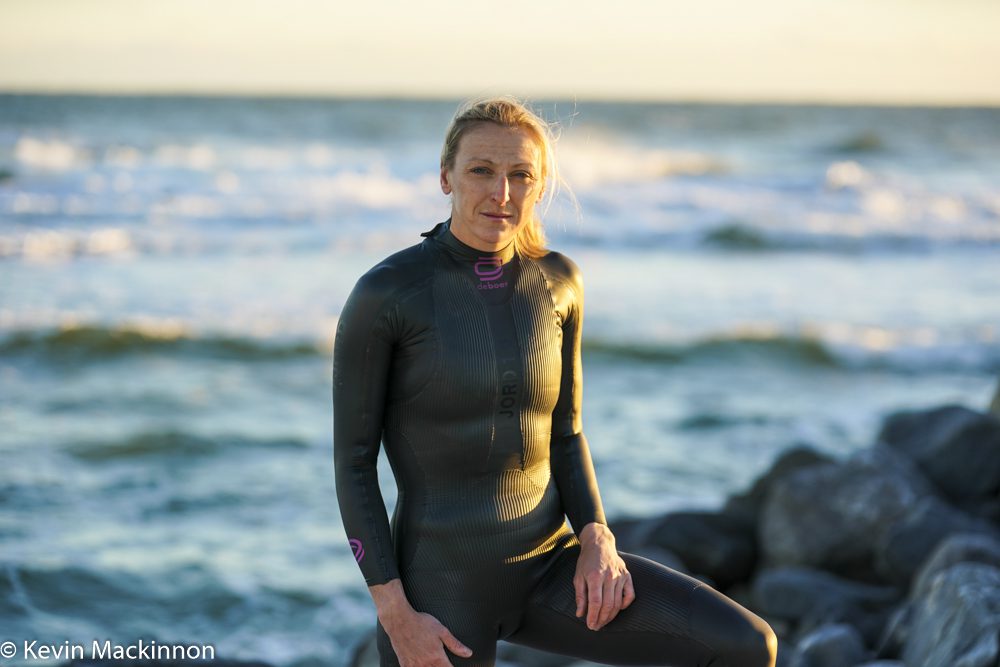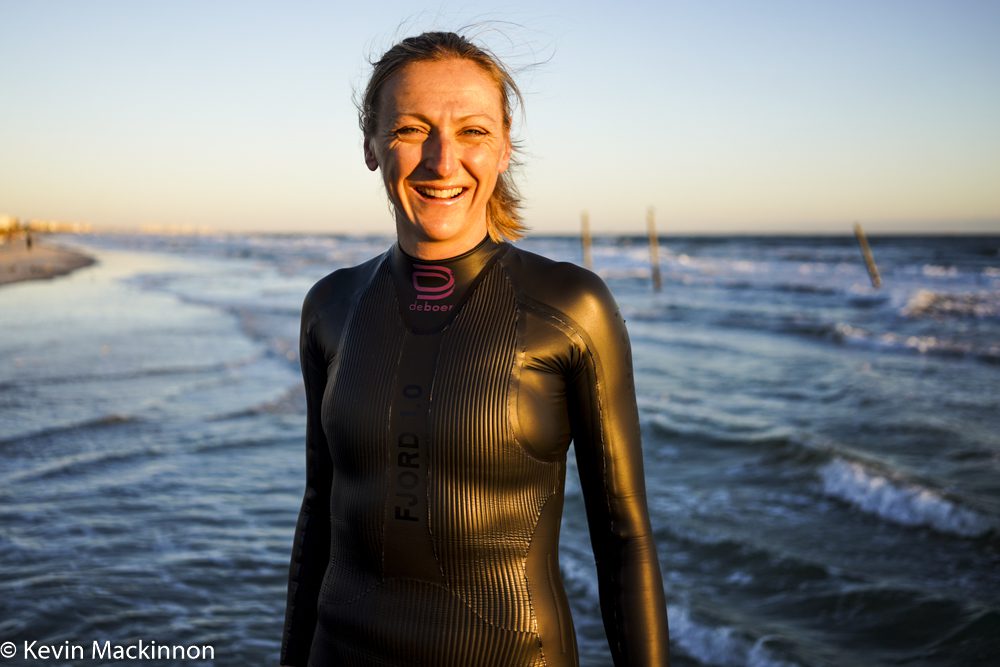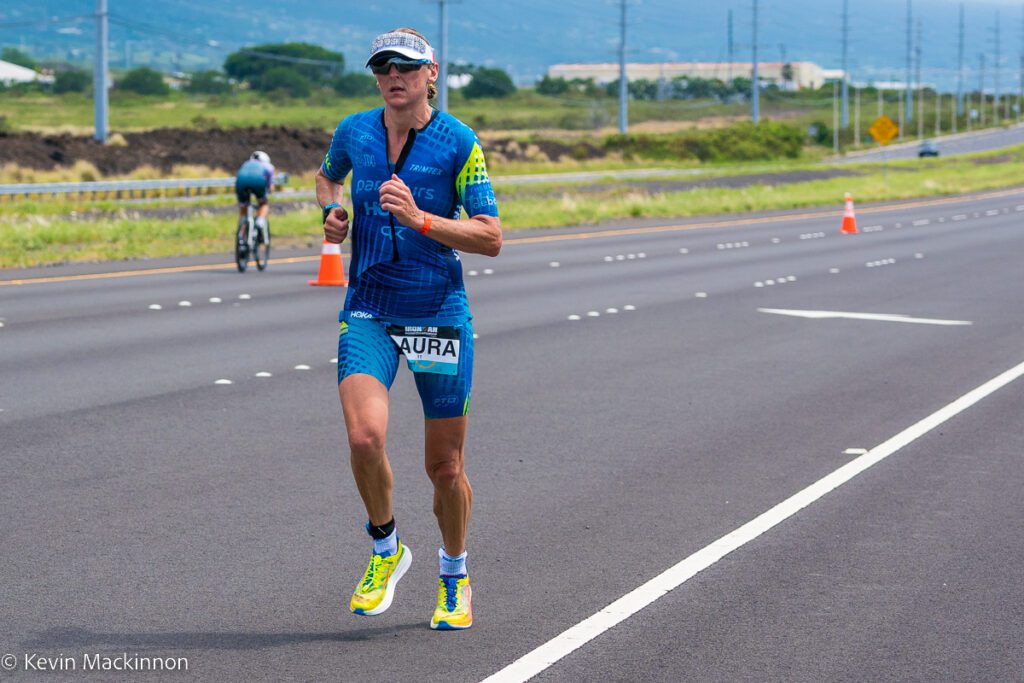From a beginner swimmer to top-10 in Kona. Find out how she did it
5 tips from a pro triathlete Laura Siddall who went from the back ... to swimming with the lead pack

Laura Siddall might be a professional triathlete, but her swim story only started at the age of 29 as a beginner swimmer at her local pool. Now, after a decade of experience, Siddall is swimming alongside the world’s best long-distance triathletes and, with her best swim to date and 10th place finish at the Ironman World Championship in Kona, Hawaii. Siddall knows what it’s like to walk into a pool as an adult beginner and also swim with the best in the world.
Long before she started triathlon, Siddall did have some water experiences. Rather than a sport she trained, swimming was more of a fun, occasional, activity: “It was more swimming lessons for safety as a young child and pool parties with the big inflatables.”
It wasn’t until the Brit was working in Australia that her corporate colleagues persuaded her to join them for a swim during their lunch break.
“It wasn’t swim training, it was more just to get outside—and the sandwiches after were really, really good,” Siddall laughs. “I never thought I was a bad swimmer because I knew I wouldn’t drown, but then when I joined the group, especially being in Australia where everyone seems to know how to swim, I realized I didn’t really know how to swim.”
Although she was “sporty,” Siddall says she was a real beginner.
“I was never taught specifically about technique,” she says. “I just tried to copy what I saw other people doing. I had the motion, but I wasn’t really moving forward.”

Siddall remembers seeing other swimmers flip turn, then deciding just to try a somersault and “hope for the best.”
Siddall progressed quickly from an age group triathlete to the professional ranks, but her swim was her constant weak spot.
“I put so much work in, but the correlation wasn’t there,” she says. She tried joining a group, but, with no coach on deck, it didn’t seem to help. Even when she got help from coaches or other swimmers, Siddall said the advice was always different and never seemed to translate into better race performances. “I can train the house down and I’m strong and powerful, but that doesn’t make me the best swimmer,” she says. “In other sports that might make you the best, but it doesn’t in swimming.”
Despite her struggles in the water, Siddall was an undeniable consistent performer in long-distance triathlon, earning podium after podium and capturing many race titles.
However, fans of Siddall saw something start to happen last year. It didn’t send shockwaves through the triathlon community but, for those who knew, Siddall was in an unusual place during the swim in a few races. Siddall was swimming stroke for stroke in the main pack at big races including Challenge Roth and Kona. In Kona, Siddall swam in the pack of favourites with Daniela Ryf, Anne Haug and Laura Philip, clocking a 58:08.
So what finally changed?
The breakthrough came from her time at the Paralympic training camp before the Tokyo Games. As a reserve guide for the British Paratriathlon team, Siddall was in Tokyo training with the team and ran into another athlete’s coach. He approached Siddall and asked if she wanted some feedback while she was training alongside his athlete. With extra encouragement from her own coach, Siddall took him up on his offer.
“Bless him, he spent a couple sessions with me breaking the swim down, all while he was still coaching to prepare his athlete for the Paralympics,” she says.
Siddall says they worked on her timing and there were key words that resonated with her about the catch, pull and recovery. She gained the confidence to go slow, especially during the warm-up, where she focused on “setting her stroke up” for the rest of the swim.
“The main thing for me was getting someone to explain it in the terms that made sense to me,” she explains. “I had a few people help and previous coaches who had said stuff, but because I didn’t come from lessons or a background in swimming, it never really made sense to me.”
All of which led to the Ironman World Championship, the best swim of her career, coming out of the water with Kona champs Daniela Ryf and Anne Haug. “The crazy thing is that it felt comfortable,” Siddall says, almost still surprised.

Siddall’s Top Tips
- Find A Coach that Speaks Your Language: Finding a coach that explains things in a way that connects with you can make all the difference. If you’re not progressing and finding it challenging to understand feedback and direction from your coach, ask them to explain it in a different way, or find a coach who can. Even a one-off swim analysis from a different coach might be enough to make positive stroke changes.
- Have the Confidence to Start Slow: Use the swim warm-up to set up your stroke for the main set. Groups often start really fast and Siddall says everyone usually goes past her in the warm up. Using the warm up to lock in good technique will pay dividends during the main set.
- Focus on Technique—But Measure Progress on Efficiency: “In swimming, hard work doesn’t always pay off, but intentional practice does,” Siddall says. Technique is a fundamental part of swimming, and it can be hard to choose technique practice over speed work or mileage; But, although you might not initially see the payoff in speed or time goals, holding the same speed might feel easier because you’re more efficient and that shouldn’t be underestimated.
- Join the Right Group: “If you’re a swimmer, find a swimming group; if you’re a triathlete, find a triathlon swimming group; if you’re an open water swimmer, find an open water swimming group,” she says. Joining the right group is more likely to put you in a group where people have “similar abilities and goals,” and that will make a positive difference, not just on your stroke, but on your level of enjoyment and motivation.
- Swim A Lot…More Often: Everyone talks about the “feel for the water,” but that is elusive. Habit and routine is something more concrete. “As a beginner, going in the water more often is better because it just keeps your body used to it,” Siddall explains. “Shorter swims more often can be better than two big chunky five kilometer swims.”
